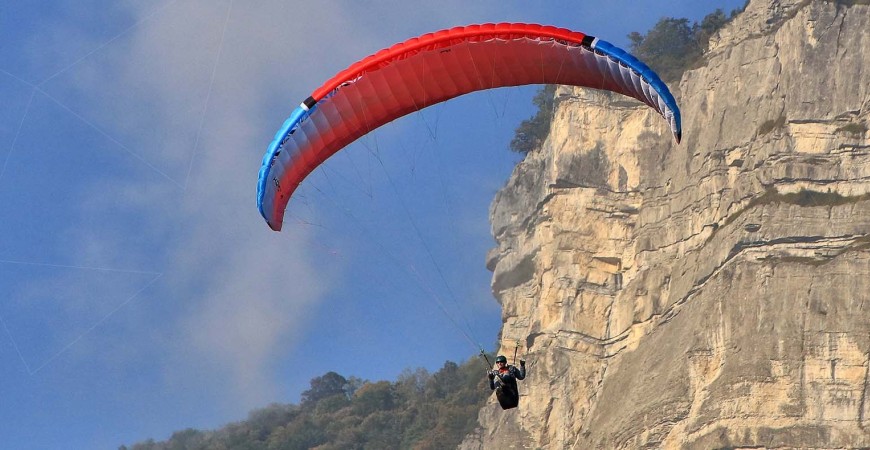FULL PACK RESCUE HARNESS AND GLIDER : THE BEGINNER'S GUIDE
HOW DO YOU CHOOSE YOUR FIRST COMPLETE PARAGLIDING PACKAGE?
That's probably the question you're asking yourself if you're thinking of buying your first paragliding equipment after your introductory paragliding course.
In this article, we'll look at the main issues involved in choosing your first complete paragliding pack, including the type of equipment, sizes and whether it's new or second-hand.
Don't forget that as you read, you can ask us your questions in the comments section or by clicking here. (link to question form).
WHAT MAKES UP A COMPLETE PARAGLIDER RESCUE HARNESS PACK READY TO FLY?
The essential elements that make up your first pack will be the same as those you've already encountered on your training course. These are the paraglider, the harness and finally the reserve parachute. Of course, you'll also need all the connecting elements you'll need to go flying. These include carabiners, quick links and risers. We'll also take a brief look at the additional equipment you'll need to complete your pack. Although optional, they offer added value in terms of both comfort and progress.
A full paragliding package consists of a wing, harness and reserve parachute.

HOW TO CHOOSE THE RIGHT PARAGLIDER FOR YOUR TOTAL WEIGHT IN FLIGHT AND FLYING STYLE?
Paraglider class, EN A for beginners
This is an important point to cover, since a glider's class determines its overall behavior. By behavior, we mean the reactions the wing will have to various flying situations. This is due to the weather conditions the wing will have to face, as well as to its piloting.
Wings are graded from A to D, A being the class for beginner pilots. More permissive, these gliders guarantee greater safety for novices without restricting their progress. On the other hand, the closer you get to class D, the better your piloting skills will need to be.
Estimating your Total Flying Weight
Another important point is to be able to estimate your total flying weight (TFW).
Your TFW is the sum of your bare weight and all your equipment (wing, harness, reserve, clothing, etc.) As a first estimate, you can take your bare weight plus 15 kg as a rough guide. This leaves a little margin for a bottle of water, your clothes, plus a full standard pack.
Knowing your TFW. will enable you to choose your paraglider size. This is important to know whether you want to fly at the bottom of the range, in the middle or at the top. In most cases, the weight range for a wing is between 10 and 20 kilos. It's generally preferable to fly in the middle or top of the weight range, to guarantee good speed and piloting precision.
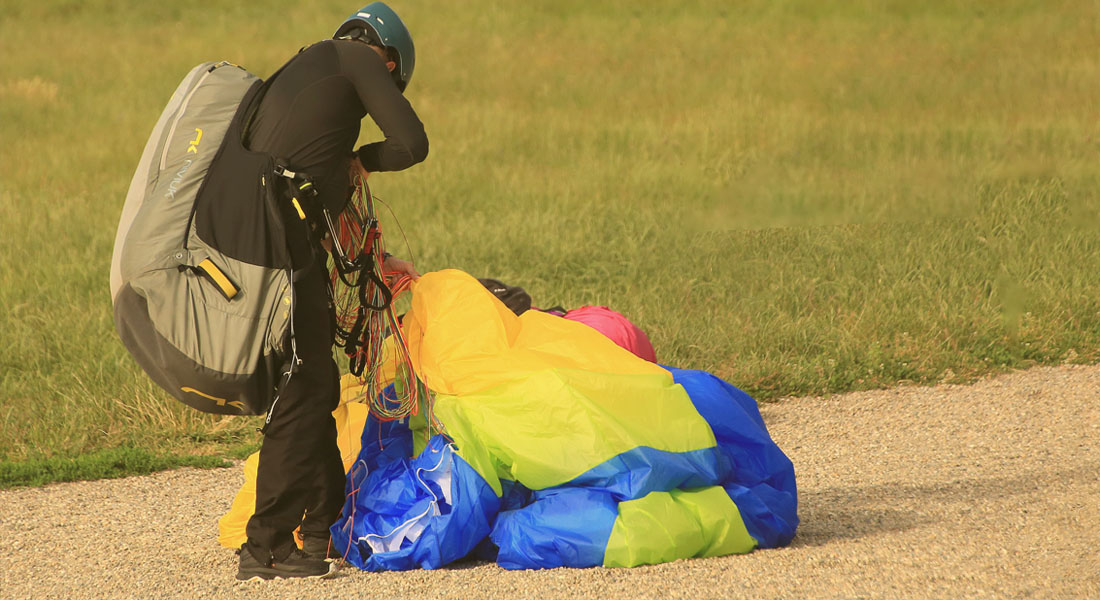
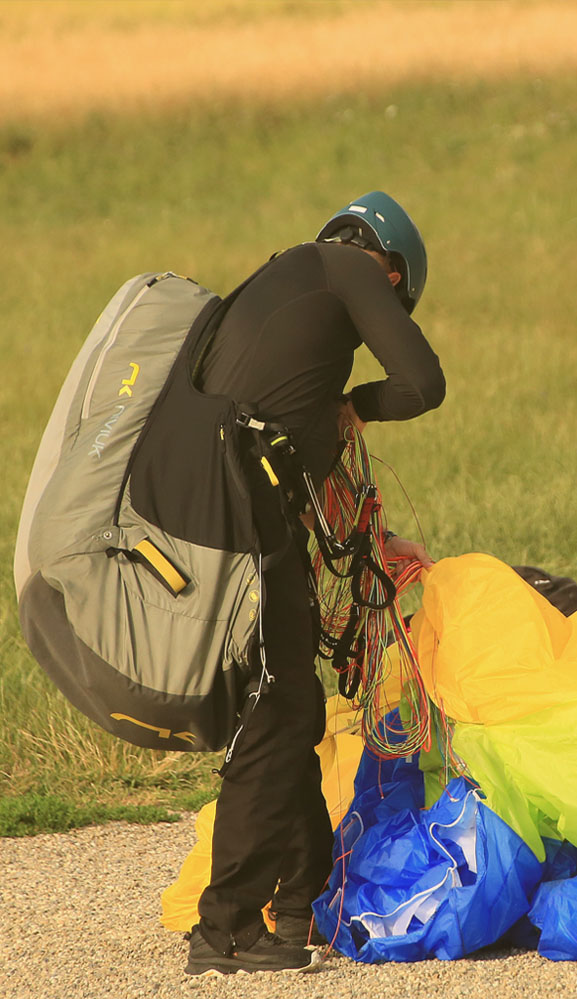
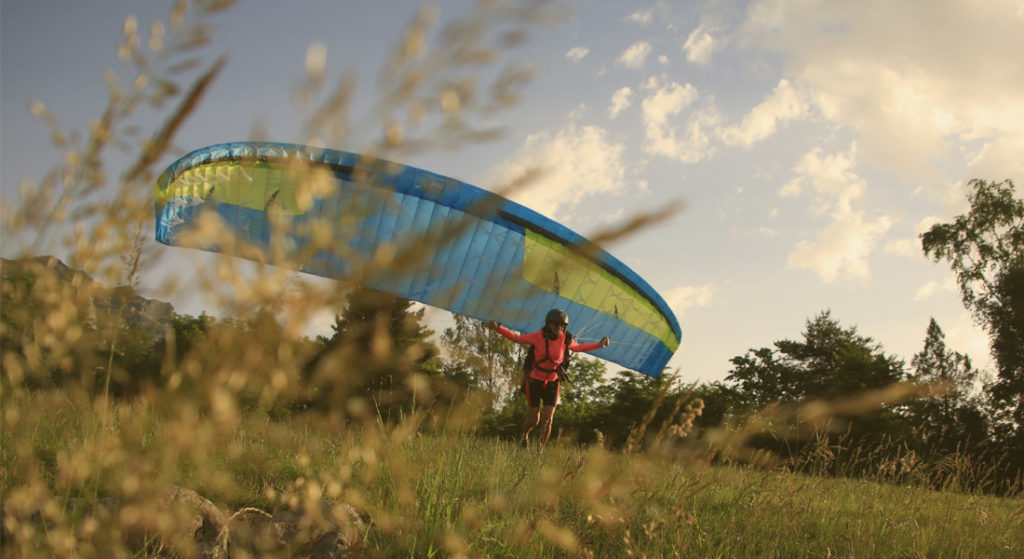
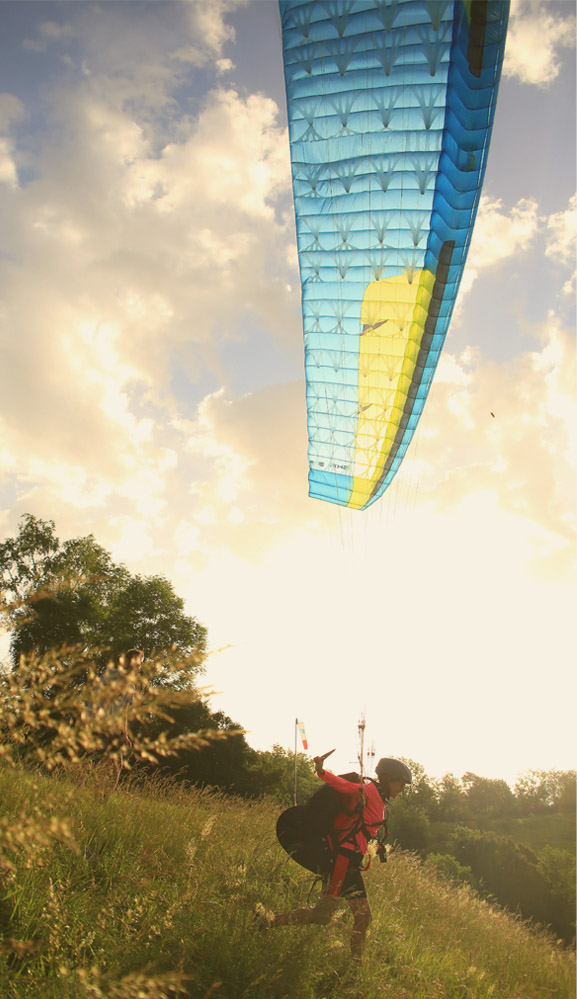
What kind of wing for what kind of paragliding?
Once you've got a rough estimate of your total weight in mind, focus on the type of flying you'd like to do. Do you prefer a mountain flying style, with long approach walks? Or do you prefer to fly on site, i.e. short flights - ploufs - on known and accessible take-off zones? The answers to these questions will help you decide whether to opt for a standard paraglider or a lightweight gliders. A low aspect ratio wing that's more playful. Or a higher-performance wing.
In any case, this choice is not really a limiting criterion, because for a school outing, the most important choice will be the class of your wing, which should be an EN A. In any case, whether you choose a classic or a light wing won't change the fact that you'll be able to make great progress in either case, and with the same class, the wing's passive safety will also be equivalent.
Conclusion
Here's an example of a diagram to help you choose a beginner wing:
What kind of flying am I going to do, and what am I looking for in paragliding?
I want to hike in the mountains and fly back down.
> Go for light equipment.
I'm going to fly in an abrasive environment like sand or snow.
> Prefer sturdy wings.
I want to evolve towards long-distance flying.
> Prefer wings with a few extra points of aspect ratio.
I'd like maximum safety and peace of mind.
> Fly at the lower end of the weight range.
I want a lively wing with precise control.
> Fly at the top of the weight range.
What's my Total Weight in Flight?
Add your weight to that of all your equipment.
Which paraglider class should I choose?
For a school outing, we recommend an EN A-rated wing. It will allow you to evolve safely, while giving you enormous scope for progress.
Making your decision
Once you've answered all these questions, choose the model(s) you feel are right for your complete rescue harness and wing package, and don't hesitate to contact us to ask our opinion on your choice of wing! If we have the opportunity, we'll even let you try it out in flight!

THE HARNESS: HOW TO CHOOSE THE RIGHT EQUIPMENT ?
When it comes to choosing your harness, it's once again essential to consider the type of flying you'll be doing, in order to ensure consistency between the wing you've chosen and the harness you'll be using. You'll also need to consider the type of protection you want (Airbag, foam bag, Koroyd, etc.). Airbag protection is one of the pilot's only bulwarks of protection against low-to-moderate impact. It should not be neglected.
Description of a paragliding harness
Simply put, the harness is like a flying seat. It's your cockpit. As with a conventional chair, it must be comfortable, provide good support and allow you a certain freedom of movement to perform the actions required for piloting.
The harness generally consists of either a seat plate or leg straps. These two elements will form the basis of your seat. In both cases, this will enable you to sit in the harness. The harness frame is also made up of a backrest, which is more or less flexible, and can be fitted with several settings to adjust back support or backrest inclination.
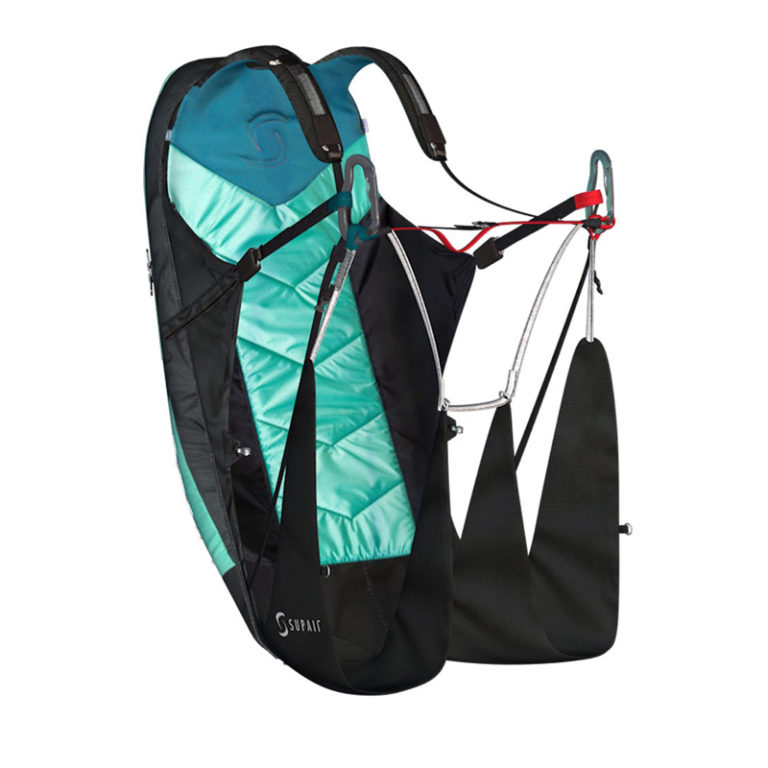
Supair Radical 4 String harness
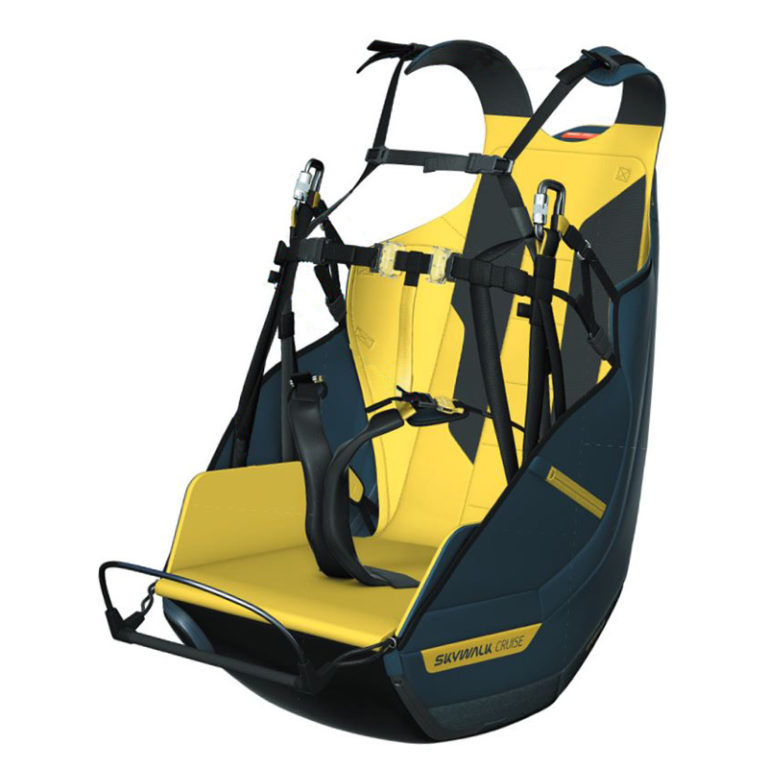
Skywalk Cruise Seated Harness
The harness also features shoulder straps to support the shoulders during take-off and landing, or during inflation sessions. Finally, depending on the model, the harness may or may not include a protective module. There are several of these, each with its own advantages and disadvantages. The two best-known are the airbag and the foam bag. Lighter than its foam counterpart, the airbag is less effective in the event of a fall during takeoff.
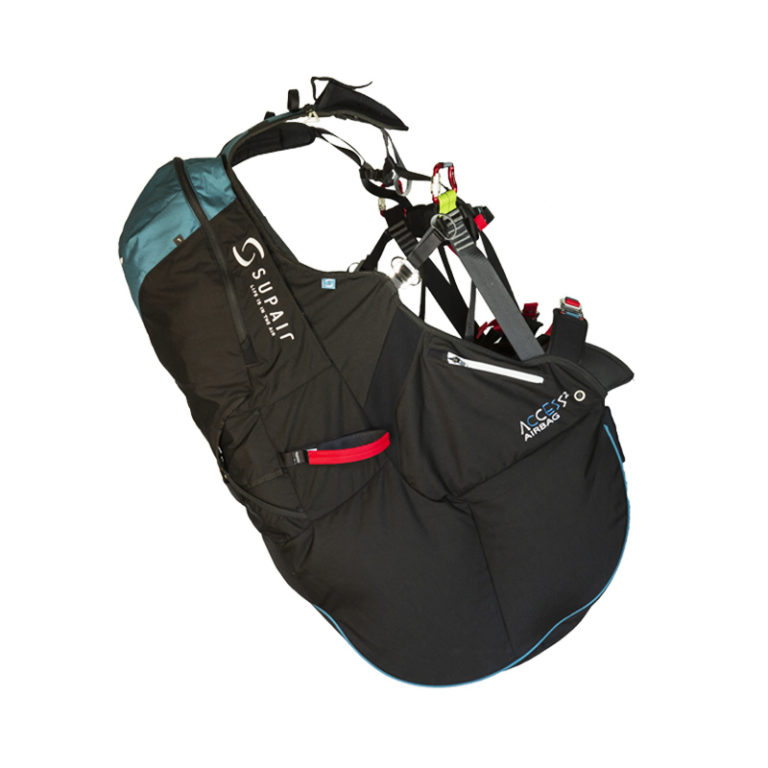
Supair Access 2 harness with Airbag
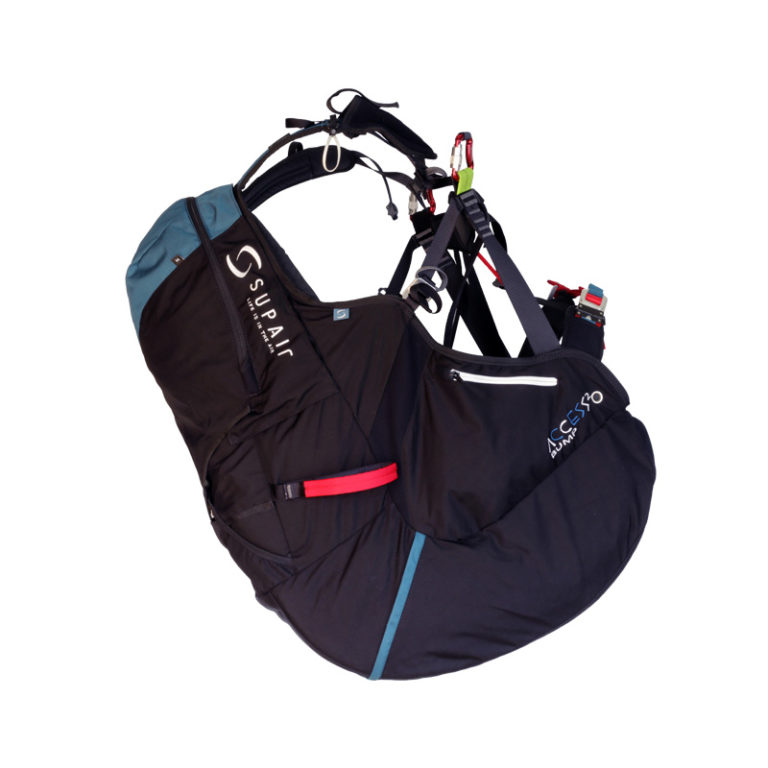
Supair Access 2 harness with foam
Equipped harnesses also come with other features, such as a reserve parachute pocket and handle. You'll also find so-called reversible harnesses, where in most cases the airbag is also a backpack integrated into the harness. Often, you'll also find other, more conventional features such as various pockets, pulleys for speed bar passage, foot stirrup, etc.
So how do I choose which harness to include in my full paragliding pack?
To put it simply, once you've chosen your wing. Ask yourself a few questions:
Do I want a lightweight harness?
> If so, you'll need to choose a string harness, an airbag harness or a reversible harness.
Do I prefer comfort over weight, or the other way round?
> If you want a comfortable harness for your paragliding package, then definitely look at harnesses with a planchette seat. If you can easily adapt to a harness that's closer to your body, then some leg harnesses may be suitable, and this will enable you to reduce the weight of your paragliding pack.
Do I need to limit my pack budget?
> If so, then you'll need the classic harnesses used in paragliding schools. They're perfectly suited to a wide range of paragliding activities.
Generally speaking, if you're going for a light beginner paragliding pack, for walking and flying, then you can consider a light wing and string harness combo to really optimize the weight of your pack.
If you're planning to fly at your own pace, on a site without approach steps, and you need comfort, then opt for a classic wing and a planchette harness.
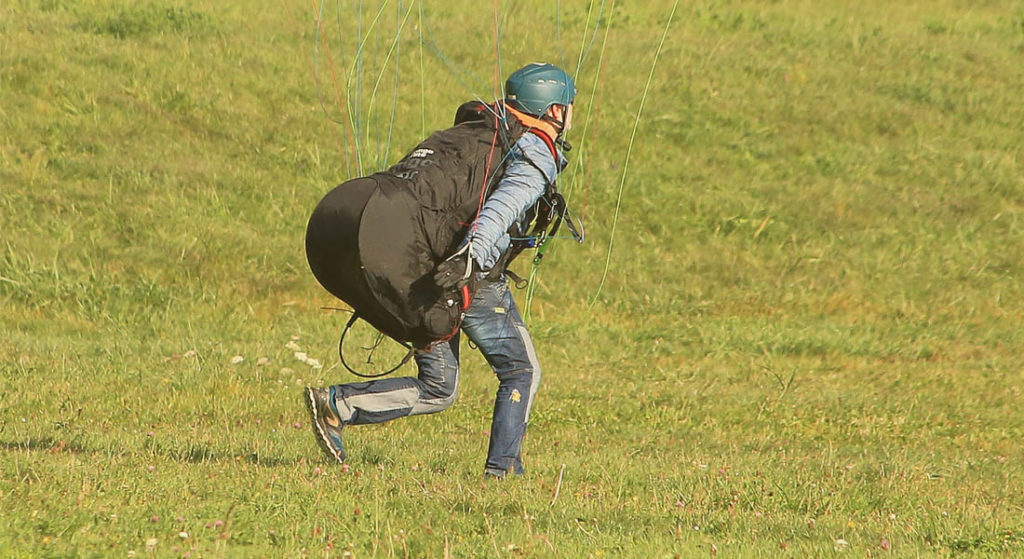
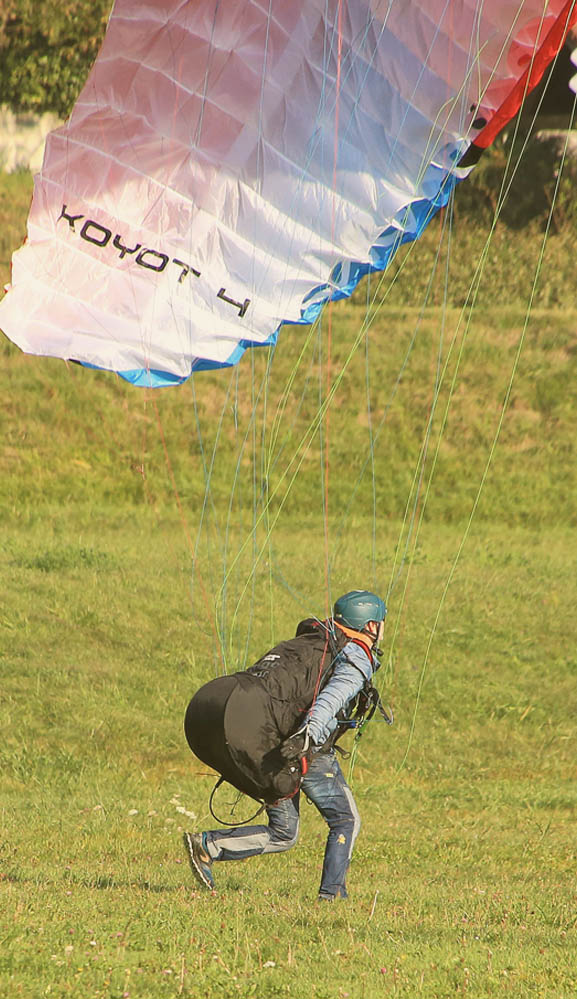
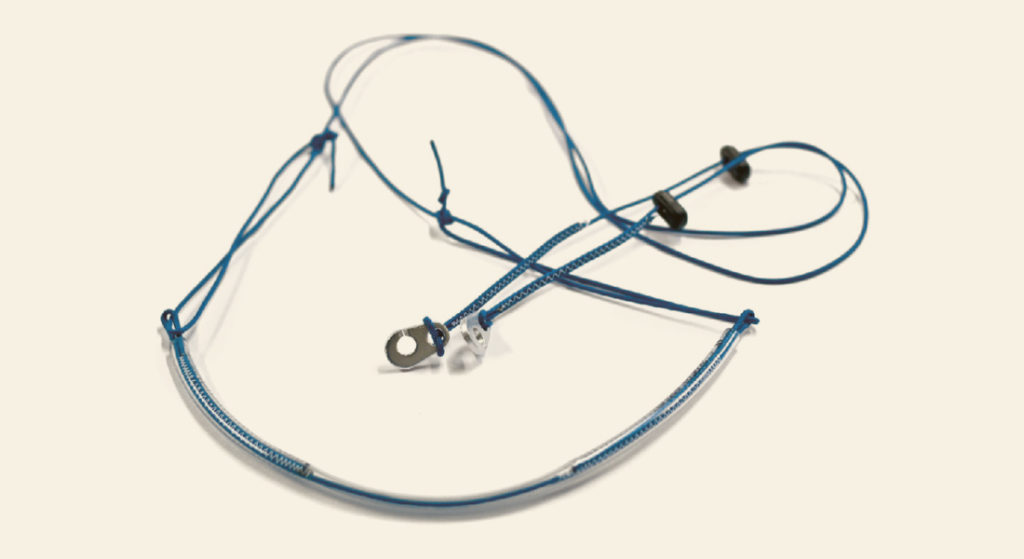
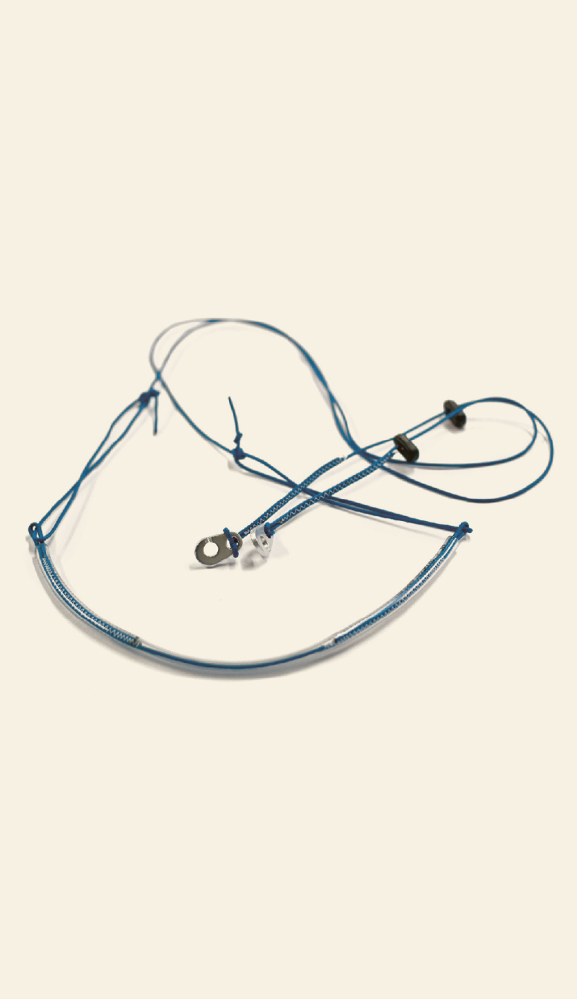
Harness accessories. Are they essential for my beginner paragliding pack?
The two main accessories you'll find on your harness are the foot stirrup and the speed bar. Although very practical, they are not vital for beginners. In paragliding, the foot stirrup makes it easier to settle into the harness after takeoff. In flight, they provide good support and comfort. The speed-bar allows you to increase the speed of your paraglider by adjusting its incidence via a set of pulleys which, by pulling on the wing's risers, "tilt" the wing's profile. In certain situations, the speed bar can be considered a non-negligible safety accessory.
In general, these two items represent a small price tag compared to the total price of the complete beginner package. It may therefore make sense to buy them outright.
Conclusion
As with paragliders, take the time to think about your flying and what you want from a harness. Don't hesitate to contact us so that we can help you refine your search for a harness to ensure the coherence of your complete wing, harness and rescue pack.
What's more, if you have a retailer or test center nearby, don't hesitate to go and test directly in store. You'll find dozens of harnesses available for testing under the gantry and even in flight!

RESCUE PARACHUTE: WHAT ARE THE OPTIONS FOR MY COMPLETE BEGINNER PACK?
This item is not to be overlooked. As its name suggests, the parachute is not intended to be used. It's an additional safety feature in the event of a flight incident. The parachute can either be located in a dedicated pocket in the harness, or front container, connected directly to the wing's carabiners. There are a few minor variations, but these are the two main principles of rescue parachute attachment. For a given rescue parachute, you'll generally find several different sizes, depending on your total weight.
Several shapes of parachute? But which one to choose?
Round (also called hemispherical)
This is one of the oldest models in existence. Most brands offer it, and it's generally the most economical. You'll find them in standard or light (lighter weight and volume) versions.
Square, Plan, triangles, etc.
These models have become increasingly popular in recent years. Generally more expensive than round parachute models - one hundred to one hundred and fifty euros on average for equivalent models - these parachutes have the advantage of opening faster than round reserves, as well as having better pendulum stability and a better sink rate. The paragliding market is increasingly turning to these models.
Rogallo
Very popular in the industry, these parachutes have the advantage of being steerable. However, they are generally heavier and bulkier than conventional rescue systems. These parachutes are aimed more at the initiated than at beginners.
And in terms of weight and volume?
You'll find 3 general weight breakdowns.
Standard
Heavier, bulkier parachutes. Weights generally between 1.5 and 2 kg. Note that these may not be suitable for all types of rescue pocket, as they may be too large. They have the advantage of being inexpensive and generally easier to pack for beginners.
Lights
These are the best-selling models. Smaller than standard parachutes, and less voluminous, they generally oscillate around 1.2 Kg to 1.6 Kg depending on Total Weight Flying.
Ultra Lights
These rescue parachutes are the smallest and most compact on the market. Weighing between 0.9 Kg and 1.3 Kg, depending on the weight rating, you'll get a parachute so small that it may not fit into some rescue pockets, which may be too large. The price of these rescues generally varies between 750 and 1000 euros.
What connections do I need for my reserve parachute?
The rescue parachute must always be connected to your harness. Whether at the shoulders or at the carabiners, you'll need risers (separate, Y). Depending on your needs, you may also need quick links for the connection. When you buy your pack, make sure you get these items! Depending on the harness you've chosen, the risers may already be installed. In this case, you won't need to buy additional risers. Once again, don't hesitate to call us so that we can give you the right information about your complete rescue harness wing pack.
Conclusion
If safety is your priority, we recommend a square or flat parachute. For a slightly lower cost, opt for a round rescue. Finally, the lighter the rescue, the higher the price.
HOW DO I FINALIZE MY CHOICE OF PARAGLIDING PACKAGE?
Once you've narrowed down your choice of paraglider, harness and parachute, if you have the opportunity, don't hesitate to come into the store and try out the harnesses under the gantry. If you're self-sufficient, and subject to stock availability, we can also lend you a wing for a test flight. However, you'll understand that we won't let you test the reserve parachute... 😊. It's not that we doubt your skills, but we'd rather not!
If you don't have the opportunity to come and see us, then don't hesitate to give us a call or drop us an e-mail so that we can guide you in your final choice!

